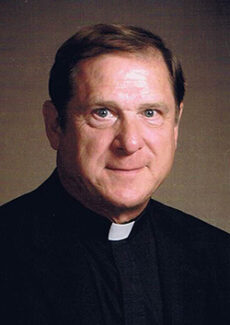Feast of Transfiguration of the Lord calls us to lifelong transformation

Father R. Michael Schaab
Living the Word l Father R. Michael Schaab
Transfiguration of the Lord l Aug. 6
Daniel 7:9-10,13-14; Psalm 97:1-2,5-6,9; 2 Peter 1:16-19; Matthew 17:1-9
The Scripture readings for this Sunday are chosen specifically for the Feast of the Transfiguration of the Lord, an event observed by Peter, James and John on a high mountain. The readings focus on both the visualization and the ramifications of the Transfiguration.
The visualization begins with the first reading from the prophet Daniel. He describes a dramatic scene of God the Father, the Ancient One, taking his throne in the kingdom of heaven. Into that scene comes “one like a Son of man,” Jesus Christ, who shares in his Father’s kingship. Jesus is the one whose “kingship shall not be destroyed.”
The Gospel from Matthew presents a similar visualization with some important differences. In the first vision the Ancient One has clothing “bright as snow.” Similarly, in the Gospel vision the “clothes became white as light.” In the first vision, “thousands were ministering to him,” and in like manner In the Gospel vision, “Moses and Elijah appeared to them.” But, in the first vision the Son comes to the Father, while in the Gospel vision, the Father comes to the Son. Also, while Daniel’s vision has the Son being served by “all peoples, nations and languages,” Matthew’s account of the Transfiguration has the Son having a word to serve the world. Therefore, all should “listen to him.”
BEING ATTENTIVE
Peter was present “on the holy mountain,” and shares his memory of the event in the second reading from the Second Letter of Peter. Coming down from the mountain the three disciples were told, “Do not tell the vision to anyone until the Son of Man has been raised from the dead.” Now, after Christ “has been raised from the dead,” Peter takes up the prophetic ministry and tells the vision to the world. Now, the Apostles “possess the prophetic message that is altogether reliable” and that the world would “do well to be attentive to.” And with that said, Peter presents a second visualization that serves to introduce us to the ramifications of the Transfiguration.
At baptism, the Father says of each newly baptized, “This is my beloved child, with whom I am well pleased.” Baptism is a personal sharing in the Transfiguration.
Peter writes about “a light shining in a dark place” — think of the Paschal Candle burning brightly in the center of a darkened church. He writes about how the light shines “until day dawns and the morning star rises in your hearts” — recall the closing words of the Exsultet: “May this flame be found still burning by the Morning Star; the one Morning Star who never sets, Christ your Son.” This vision leads the reader back to Christian initiation, back to baptism, and therein lies the ramification of the Transfiguration.
At baptism, the Father says of each newly baptized, “This is my beloved child, with whom I am well pleased.” Baptism is a personal sharing in the Transfiguration. It is a mountain top experience that grants to each child of the Father a share in the kingship of the Son.
In the Closing Prayer of the Mass, this sharing in the kingship of Christ is called not Transfiguration but “transformation,” not an event but a lifelong process which is the ramification of an event: “O Lord . . . transform us into the likeness of your Son whose radiant splendor you willed to make manifest in his glorious Transfiguration.”
—
FATHER R. MICHAEL SCHAAB is a senior priest of the Diocese of Peoria who gives retreats and days of recollection, and who fills in as presider at parish Masses on weekends. He resides on a hobby farm in Putnam County.





